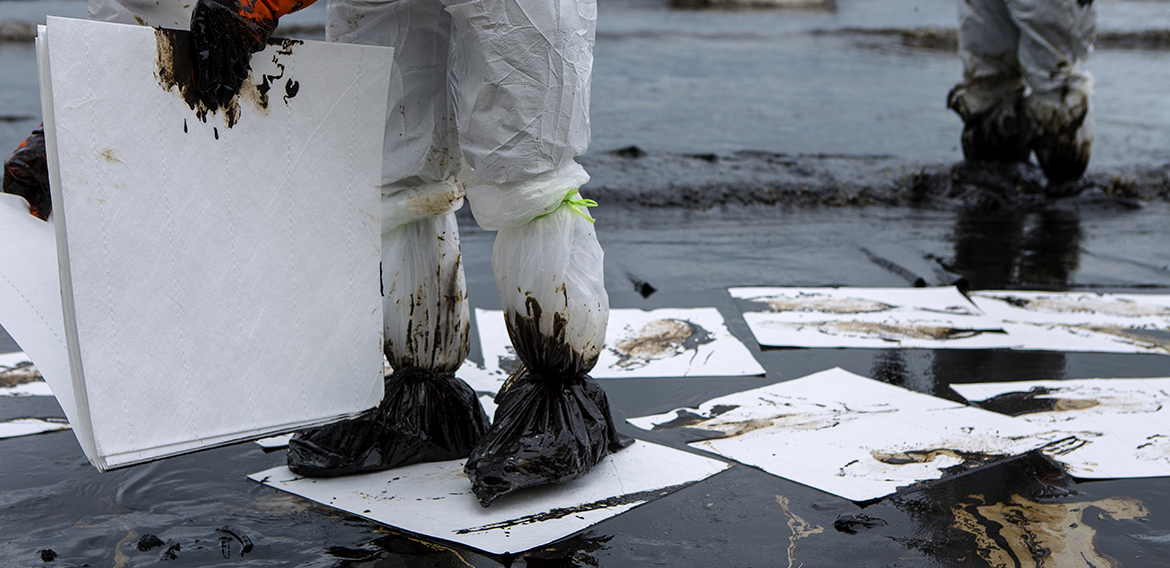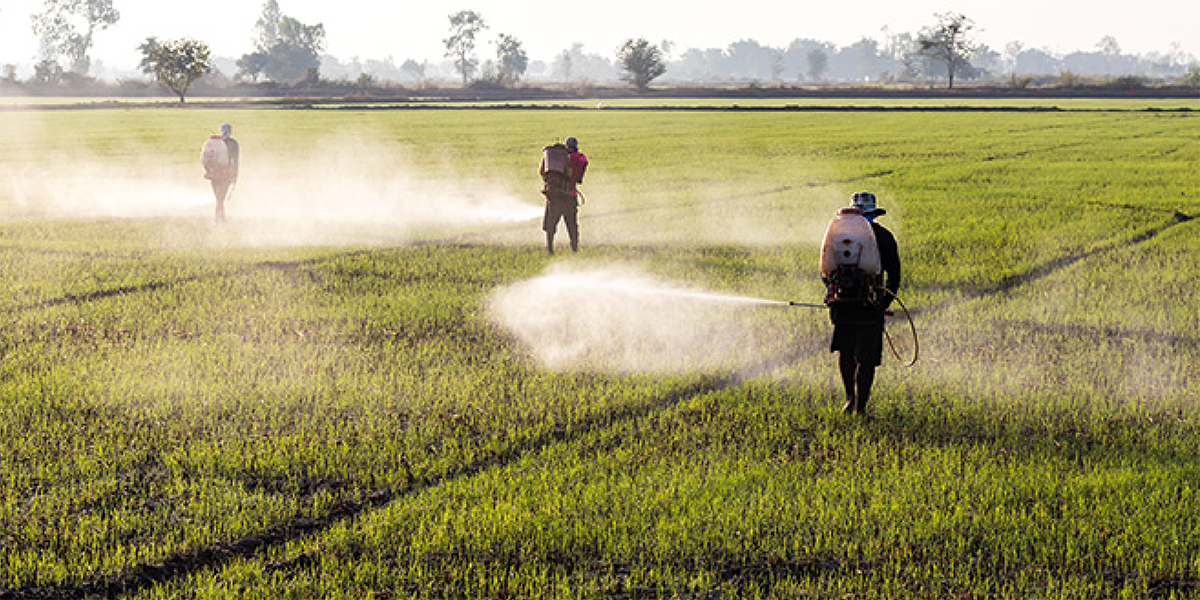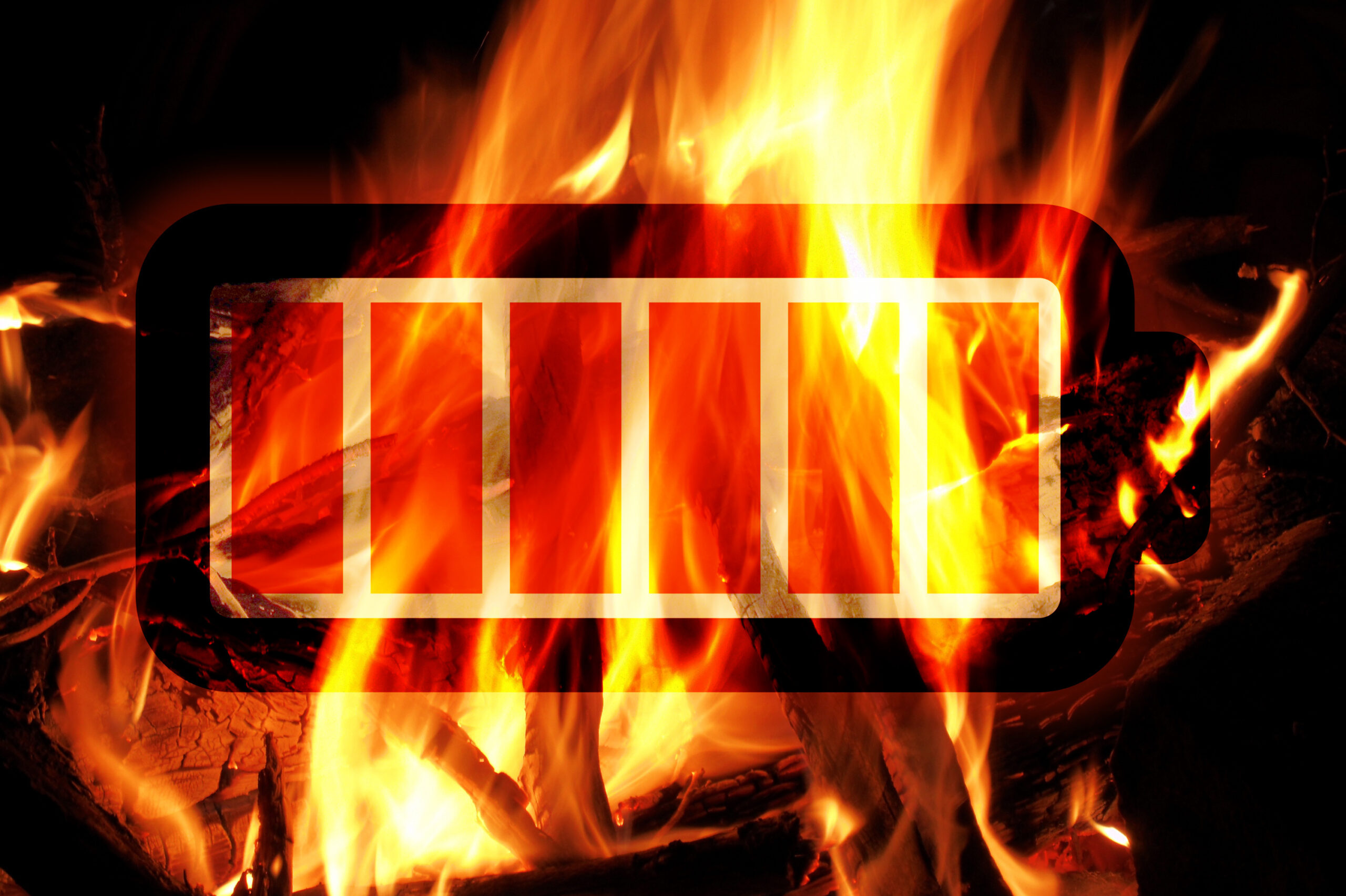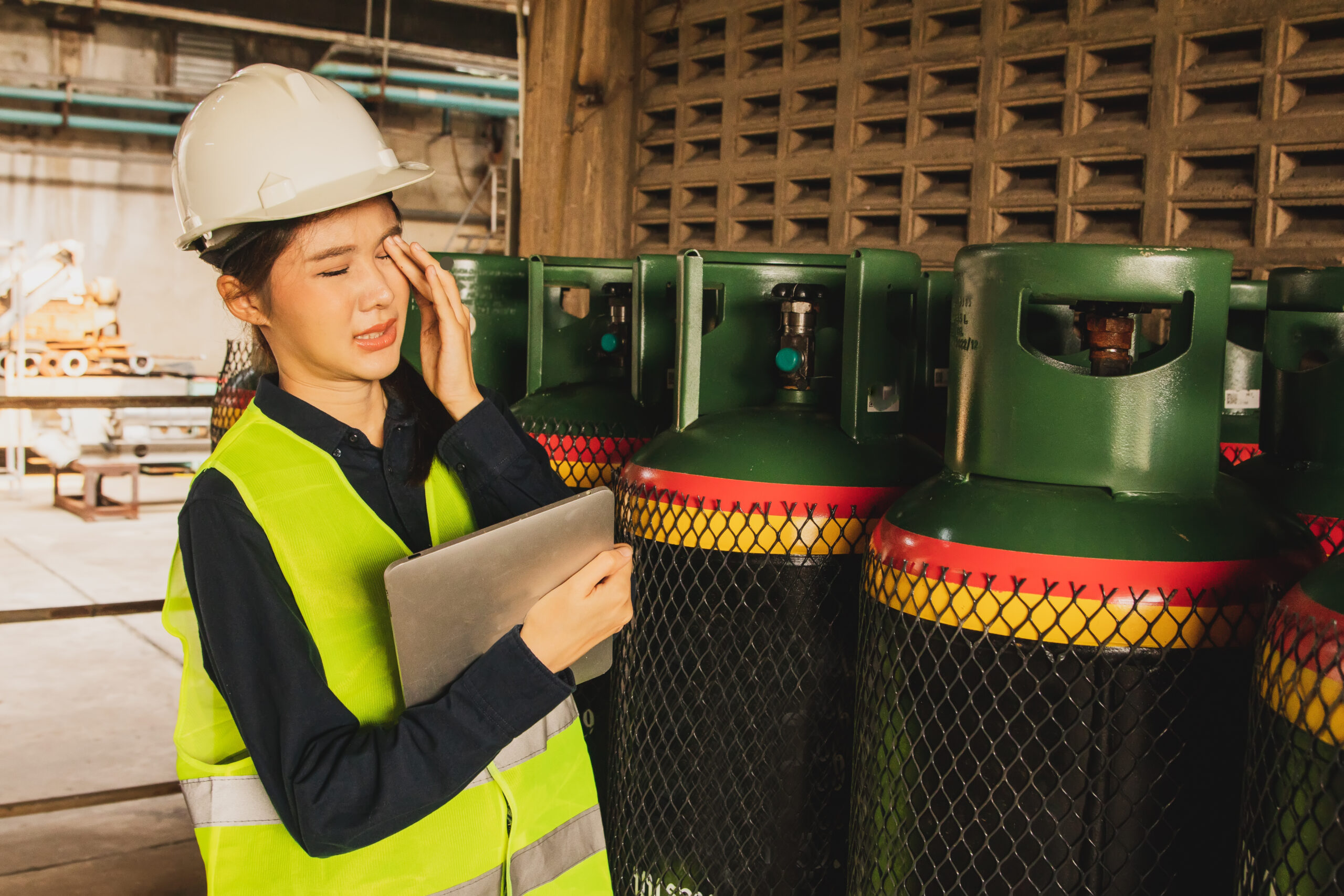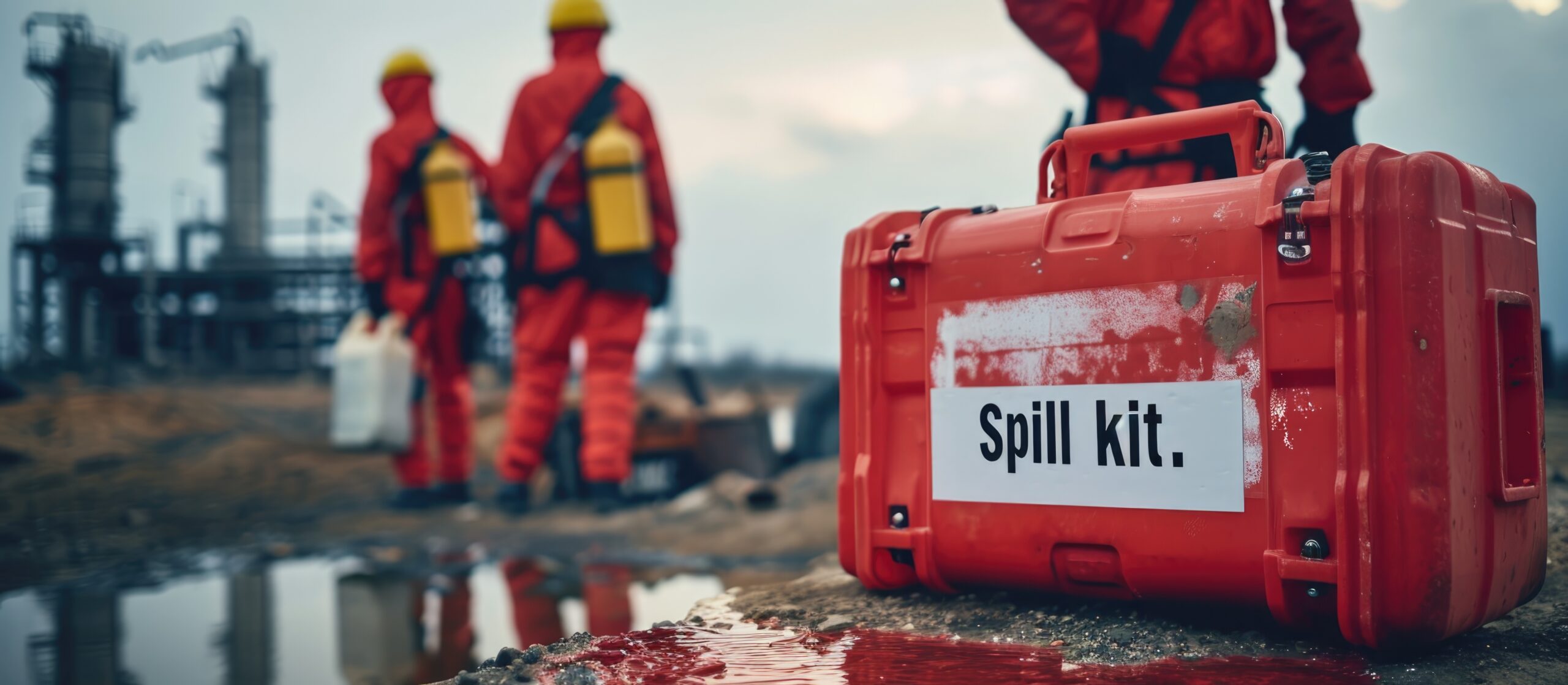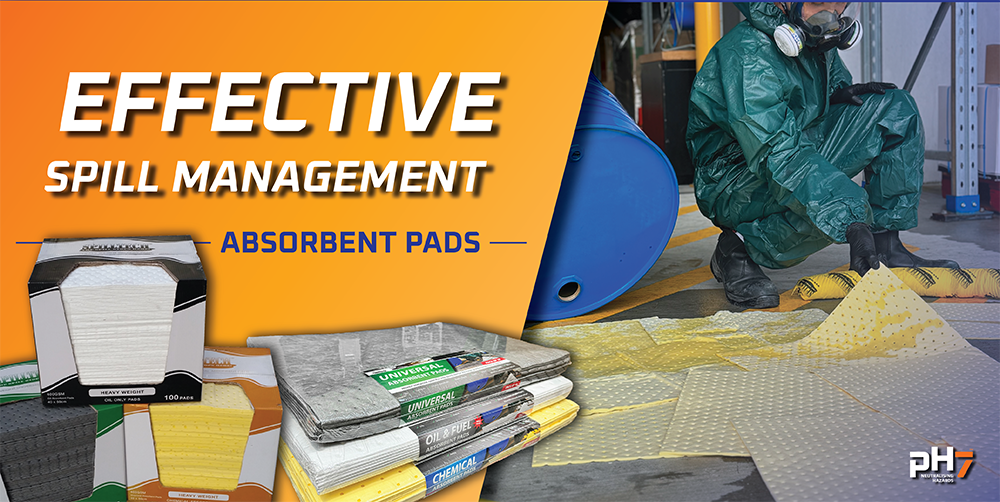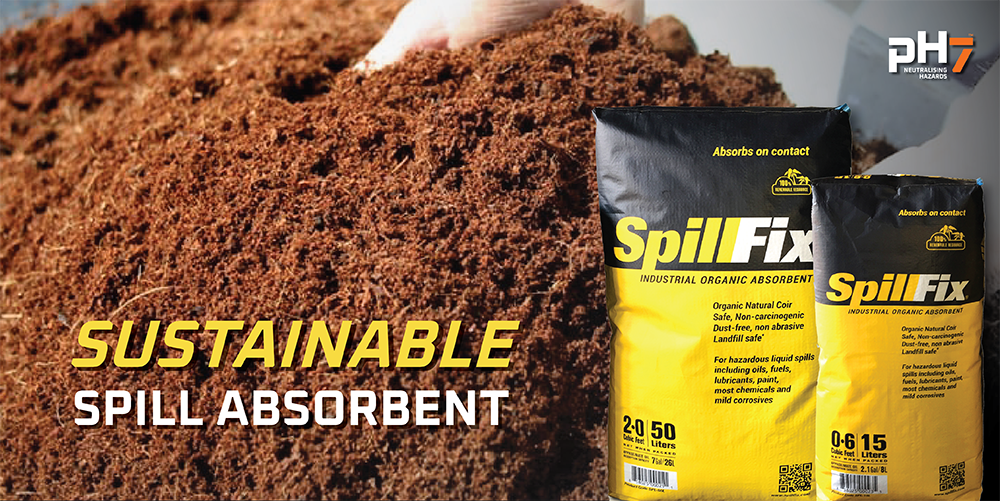Like the Scout’s motto, when it comes to spill response, it’s best to “Be Prepared”. Any company working with hazardous substances is required by Health & Safety legislation to have an emergency response plan to deal with spills and accidents.
Your spill response plan should include information such as what chemicals you have on site, where they are located, what procedures should be followed in order to respond to a spill and who the key contacts are, such as trained personnel, your safety supplier and emergency services.
Part of developing your spill response plan will be ensuring that you have the correct spill kits and absorbents to clean up spill. Taking some time during the planning stage can save a lot of headaches during an emergency. Below are a few tips to help you with your planning so you can effectively and safely respond to spills when they occur.
- What are you likely to spill?: The first step is to know what chemicals you’re likely to spill and have to clean up. This will be important so you choose the correct absorbent material. For example; if you’re working with fuels such as petrol or diesel then you’re probably best to use an “oil only” absorbent that will absorb these fuels while repelling water.
- Size of spill: Understanding the potential size of a spill will help you determine what your response plan should be. Commonly, spill kits range in size from bagged 25L kits to larger wheelie bin kit capable of absorbing up to 240L. If you’re dealing with small volumes of liquid chemicals, appropriate sized spill kits will probably suffice. Where significant quantities of chemicals are stored and there is a potential for large spills, spill kits should be seen as the primary response only while waiting for suitable HazMat services to arrive. It is always advisable to have additional absorbents on site or a plan in place to collect additional absorbents from your depot or supplier should they be needed.
- Type of PPE: Depending on the hazardous substance you’re dealing with your kit might need to include specialist safety gloves, goggles respirators and coveralls. It’s important to remember that personal protective equipment needs to be suitable for the chemicals you are dealing with
- Types of absorbent: Industrial absorbents come in a range of styles including pads, pillows, sock, boom and loose fibre. Each style has it’s uses, for example, socks are designed to stop a spill from spreading while pads and pillows are useful for absorbing spill that have been contained behind a sock. Take some time to think about where a spill is likely to occur and consider what absorbents may be necessary to effectively contain and recover a spill
- Training: Purchasing a spill kit is only part of the process. Just as important is ensuring that your employees are trained in the use of the absorbents.
- Type of accessories: Seemingly insignificant things such as signage, instruction cards and cable ties are an important part of any spill kit as it’s vital to have all workers to be aware of its location, what it contains and how to use it.
CUSTOMISE A SPILL KIT FOR UNIQUE SITUATIONS
Sometimes, specific companies or jobs require customised kits – such as when ph7 International was involved in supplying spill response materials to companies working on the Kaikoura earthquake recovery project. Although SpillTech spill kits cover a wide range of potentially hazardous materials – in the case of Kaikoura, the direct target required ensuring oil, petrol, lubricants, diesel and hydraulic fluids didn’t get into the environment from heavy-duty construction vehicles. The kits contained absorbent pads, socks and pillows as well as personal safety gear such as coveralls, safety glasses, respirator and gloves.
Because of the large amount of work being carried out directly next to the coastline or waterways, ph7 also supplied absorbent floating booms which linked together can create a continuous barrier around larger spills.
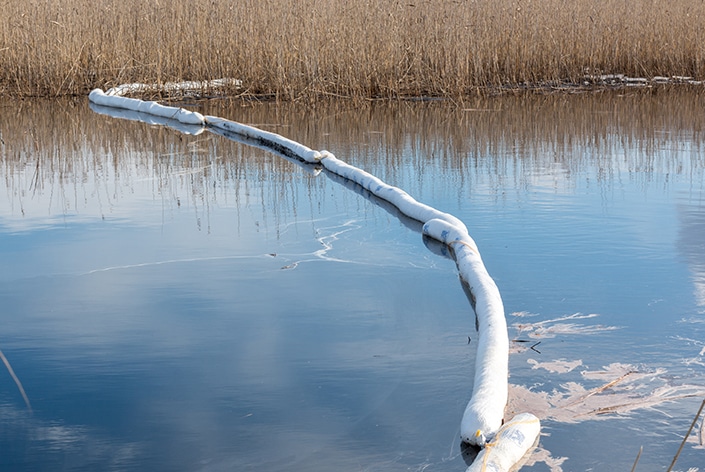
Absorbent Floating Boom
HOW TO USE THE KITS
ph7 can help you construct the ideal spill kit to suit your company’s requirements but it is also important for you to have a plan in place if they are required to be used and these plans should be tailored to individual businesses and situations.
- Training: Anyone within a business should be trained in Spill Response so they at least know whether they can clean a hazardous spill themselves or need to call someone specifically trained to the task.
- Storage: The kits should be close to the area where they are required (meaning multiple kits may be required if a facility has multiple places where spills could occur) and all staff should be aware of how to access them.
- Have enough stock: It’s ideal to have several kits on site to ensure that adequate spill response equipment is available to deal with multiple events. In the case of having kits designed to go inside company vehicles, it may be prudent to have additional kits in reserve for prompt swap outs. ph7 can assist in determining the optimum number your business may require.
ORDERING
For companies needing spill kits that are tailored to their own specifications, ph7 International is able to work alongside them to ensure not only that they have everything required to deal with an emergency, but that ordering and re-ordering equipment is as simple as possible.
- Confidence and authority: Kits can be branded so that both workers and the public understand the spill solution has been customised to suit a specific situation.
- Transparency: A customised label on the side of the kit will let anyone handling the spill know precisely what they have to work with.
- QR Code re-ordering: Because companies may require different kits in different applications or situations, it can be hard to keep up with the specifics of what is exactly contained within the unit. ph7’s QR Code re-ordering system removes all the potential for error or confusion by taking you to a branded, customised order form that can be emailed to an address of your choice.
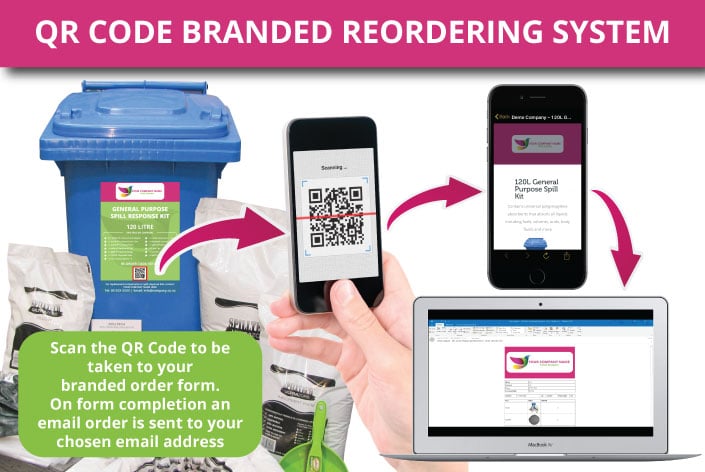
Dalton International has a full range of products covering Spill Containment and Spill Response to ensure companies conform to HSNO legislation while protecting both their workers and the environment. For more information about your requirements and or to talk through how we can help, contact us on 0800 323223, enquiries@dilnz.co.nz or via the website.
